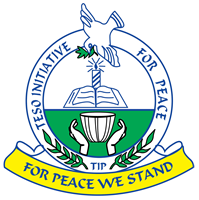
- Project Name: To establish a mobile land advisory service providing tailor made advise on specific cases of land conflict upon request from clan authorities, religious leaders, or any other actor involved in a given land conflict
- Client: TIP TESO
- Location: SOROTI
- Year Completed: 2021
Activity 1.1: Recruit staff, train and annually retrain project staff: The project recruited two staff and trained them on Customary Land Administration; the national land policy provisions; the role of traditional leaders in customary land; the interaction between formal and customary land administration; land & natural resources. With the knowledge acquired, the team carried out sensitisation sessions in the project parishes targeting general communities. This brings to 106 sensitization sessions conducted since the project started. Throughout the project period, the mobile land advisory team successfully registered, mediated and resolved 63 land conflicts and planted 34 land boundary demarcations.
Activity 1.2: Set up a network of external specialists: During project implementation, a network of 12 external specialists was formed that included Land and Equity Movement in Uganda (LEMU), Teso Anti-Corruption Coalition (TAC), Teso Legal Aid Project (TLAP), Legal Aid Project of Uganda Law Society (LAP-ULS), Soroti Catholic Justice and Peace Commission (SOCAJAPIC) and Soroti District Local Government-Lands Office and Community Liaison Office of Police. The team of specialists supported the activities of the land advisory team like running a mobile land clinic alongside the land rights awareness raising. This was instrumental in assessing land cases, giving on-spot legal advice, registration of new land cases and making the necessary referrals.
Activity 1.3: Provide necessary means for land boundary demarcation and mapping: The project then procured equipment to facilitate the process of land boundary demarcation. Following the need to draw fairly accurate sketch maps after land boundaries are agreed upon to avoid future resurgence of conflicts, the members of the Early Warning and Response System requested for this equipment to support their work. The Mobile Land Advisory Team during this period registered 63 land disputes. Mediated and successfully resolved 34 land conflicts with 19 land boundary demarcation planted, 5 did not need demarcation. While 10were referred to other partners for intervention.
Activity 1.4: Set up an early warning and response system: this was done by recruiting, training, and maintaining a team of selected community members per target-Parish. Because of the knowledge gained during the sensitizations on land rights and land administration, the 10 Early Warning and Response System Committees were able to registered 85 land related conflicts and resolved 68 of them. The committees have built synergies by working with other relevant stake holder like the sub-county leadership the community liason officer of Police, Land and Equity Movement in Uganda (LEMU) and sub-county councillors. b have also blended experiences by inviting their counterparts to give support during mediations on land related conflicts. This has been one of the best practices a achieved during the implementation of the LAMP project.
Activity 1.5: Identify and support a number of vulnerable people to access pro-bono legal assistance. The project supports a number of vulnerable people widows, divorcees, orphans, People with Disabilities (PWDs), etc.to access Pro-bono legal assistance. This pro-bono intervention shone a ray of hope on may Vulnerable Widows and Orphans
